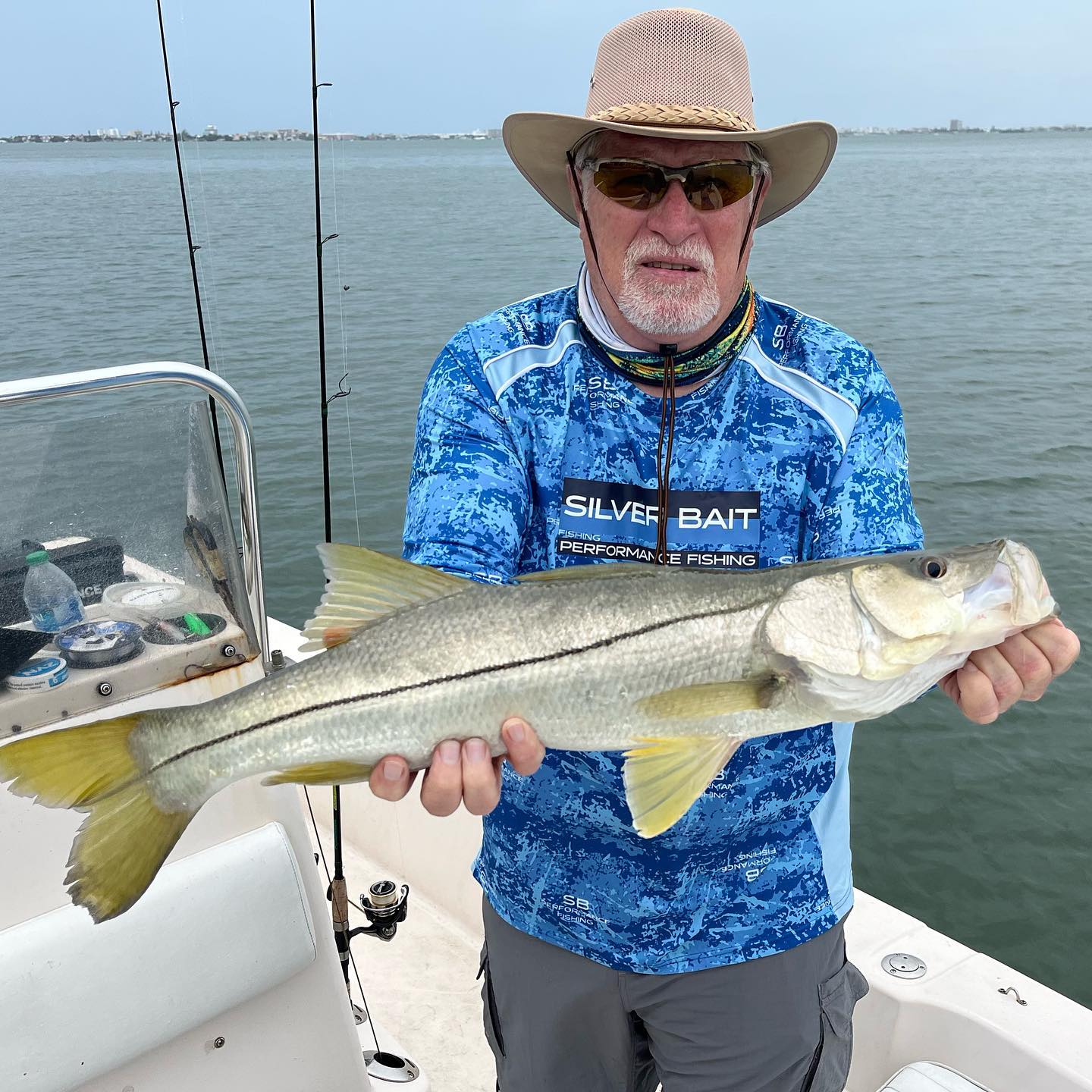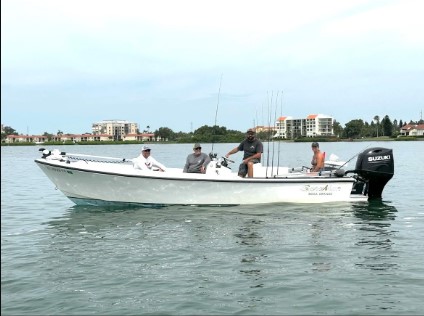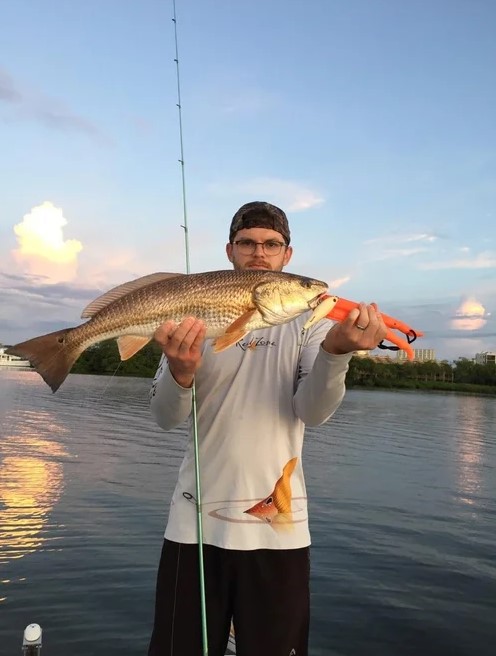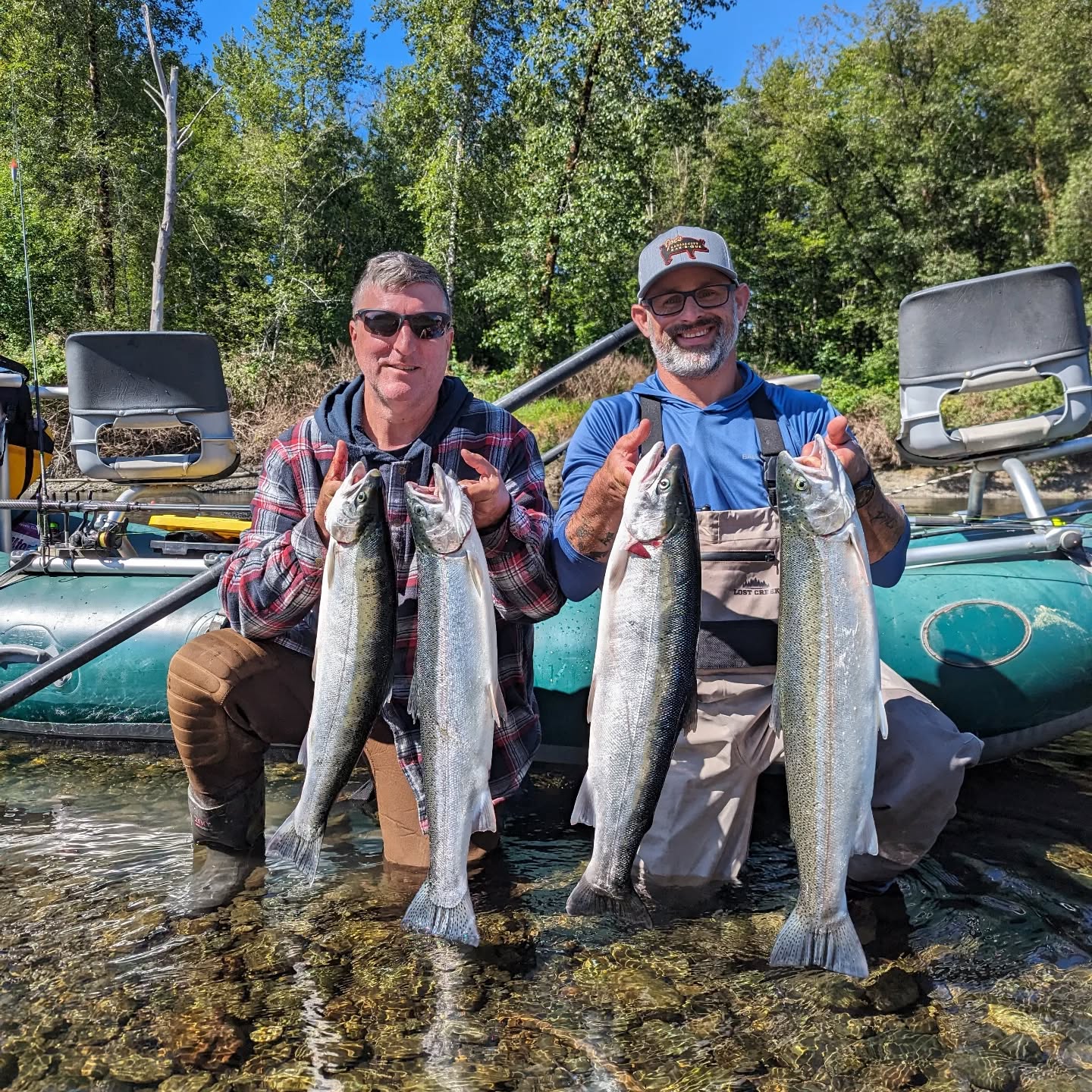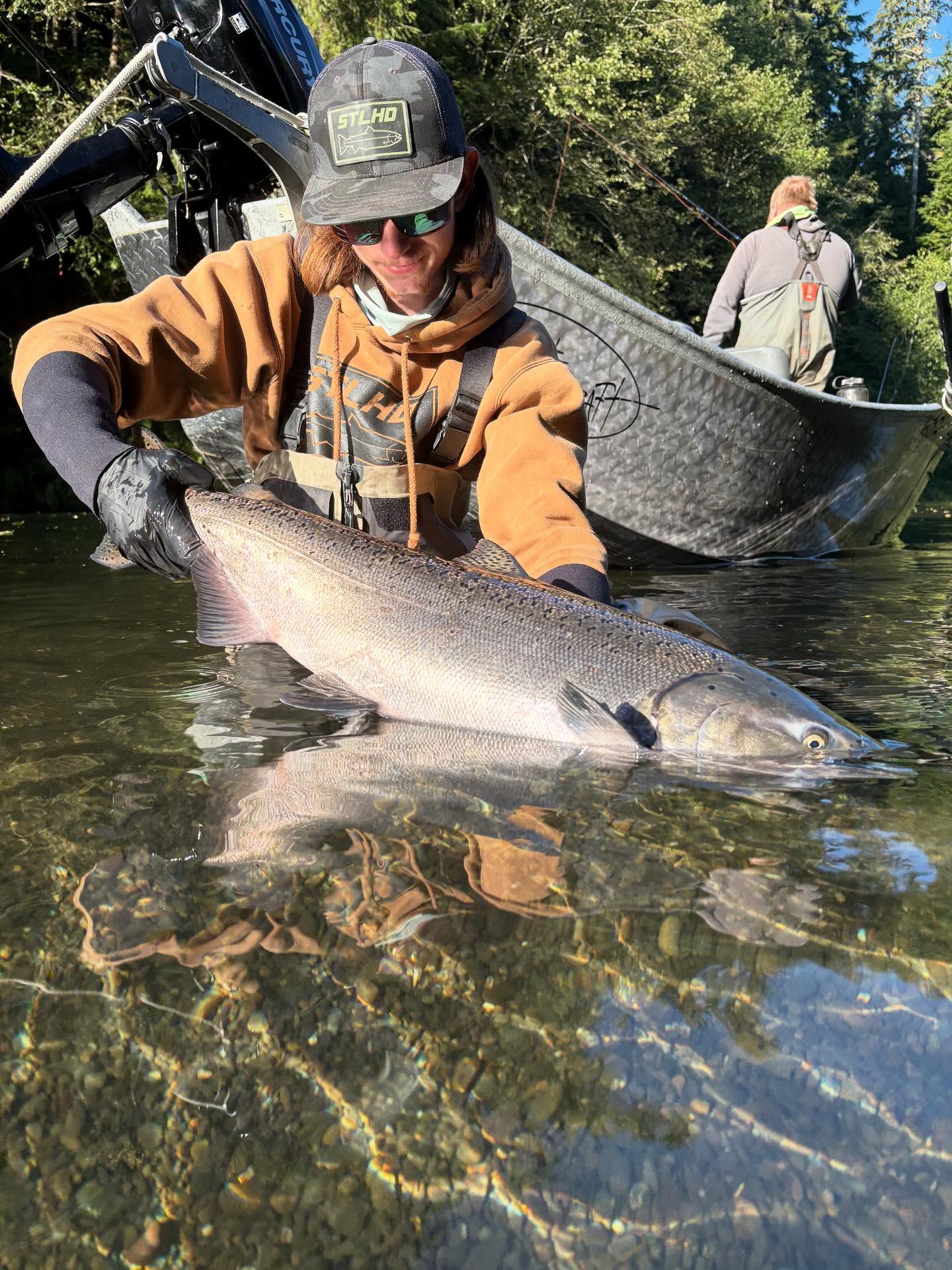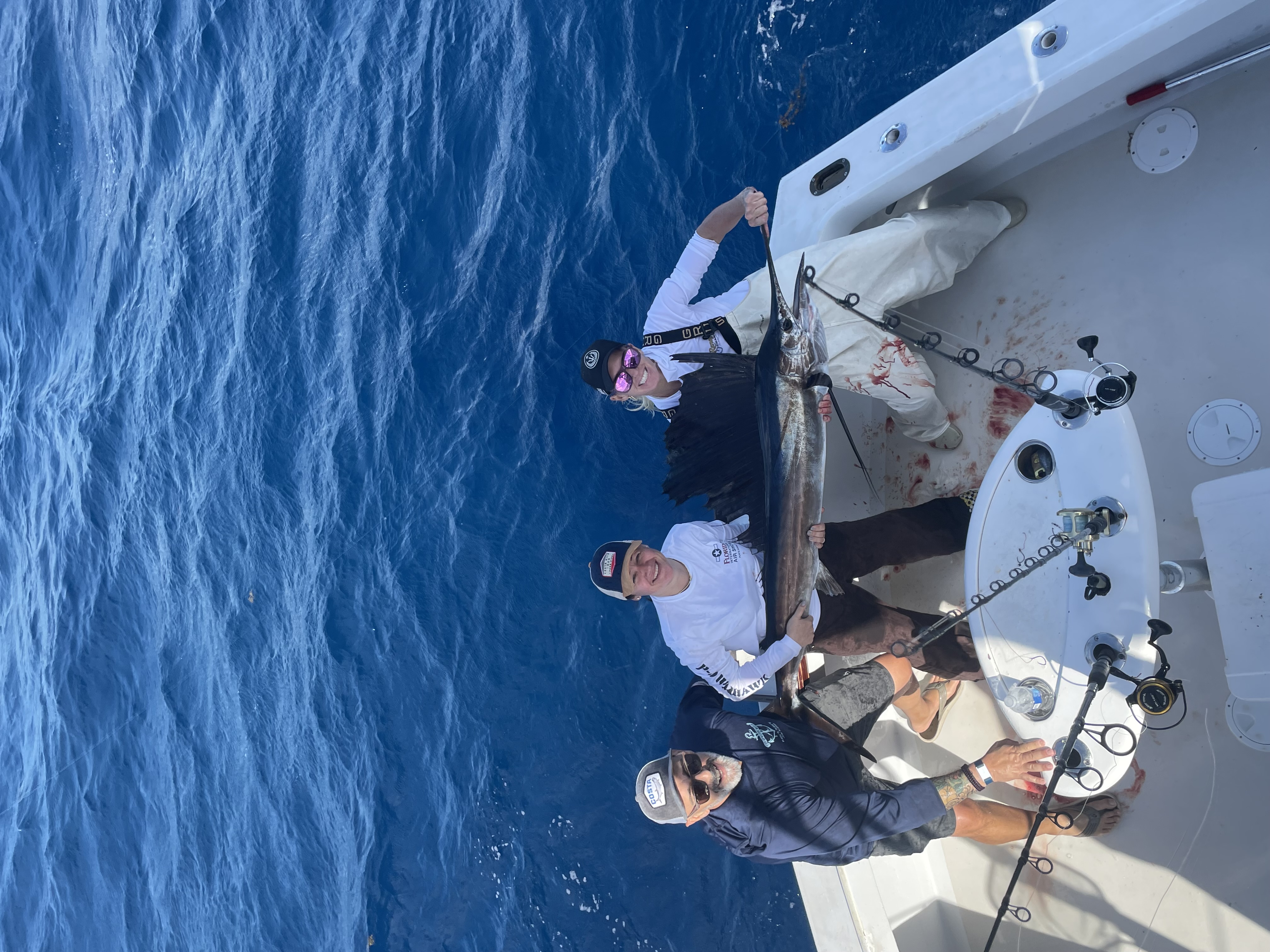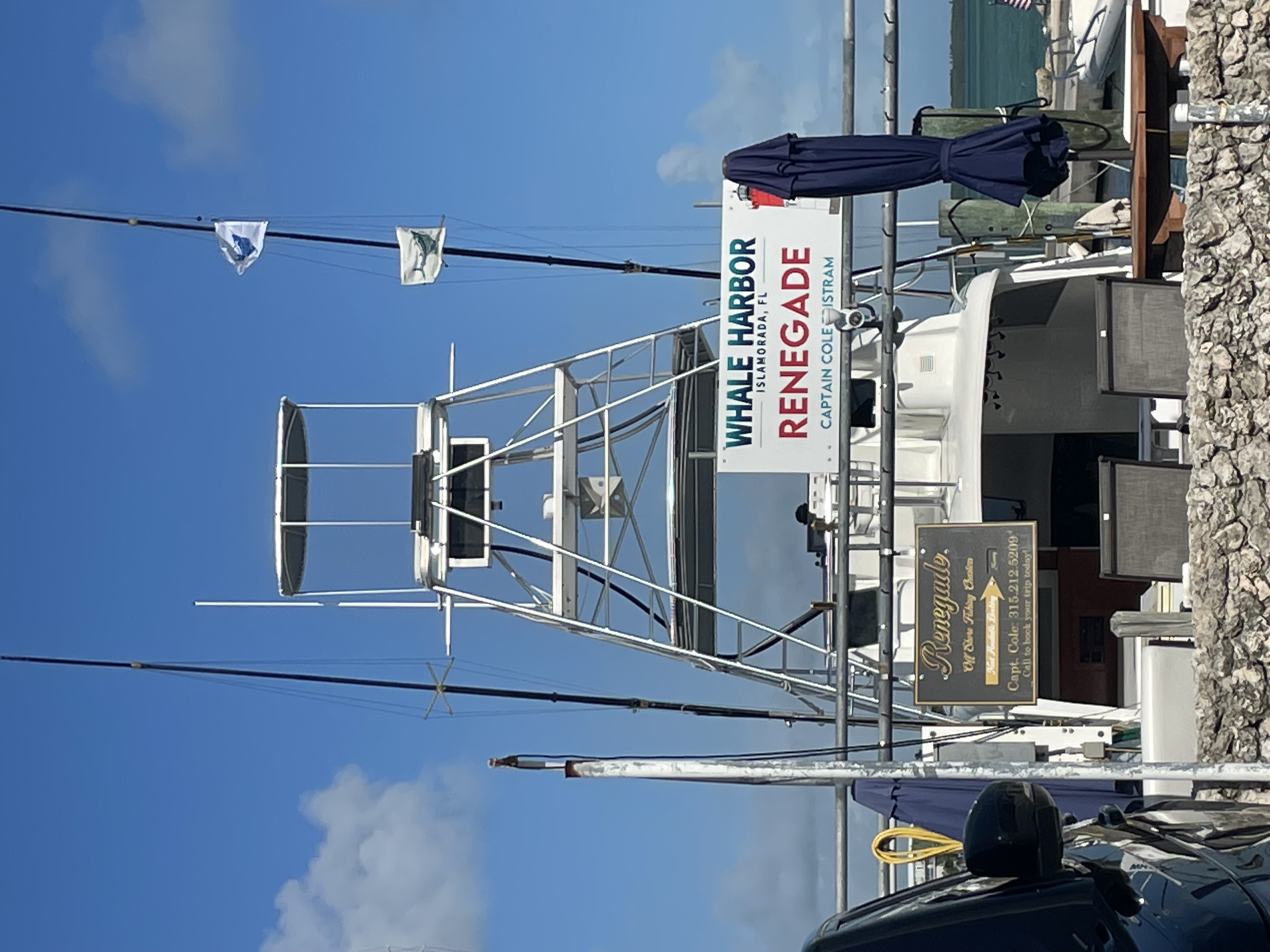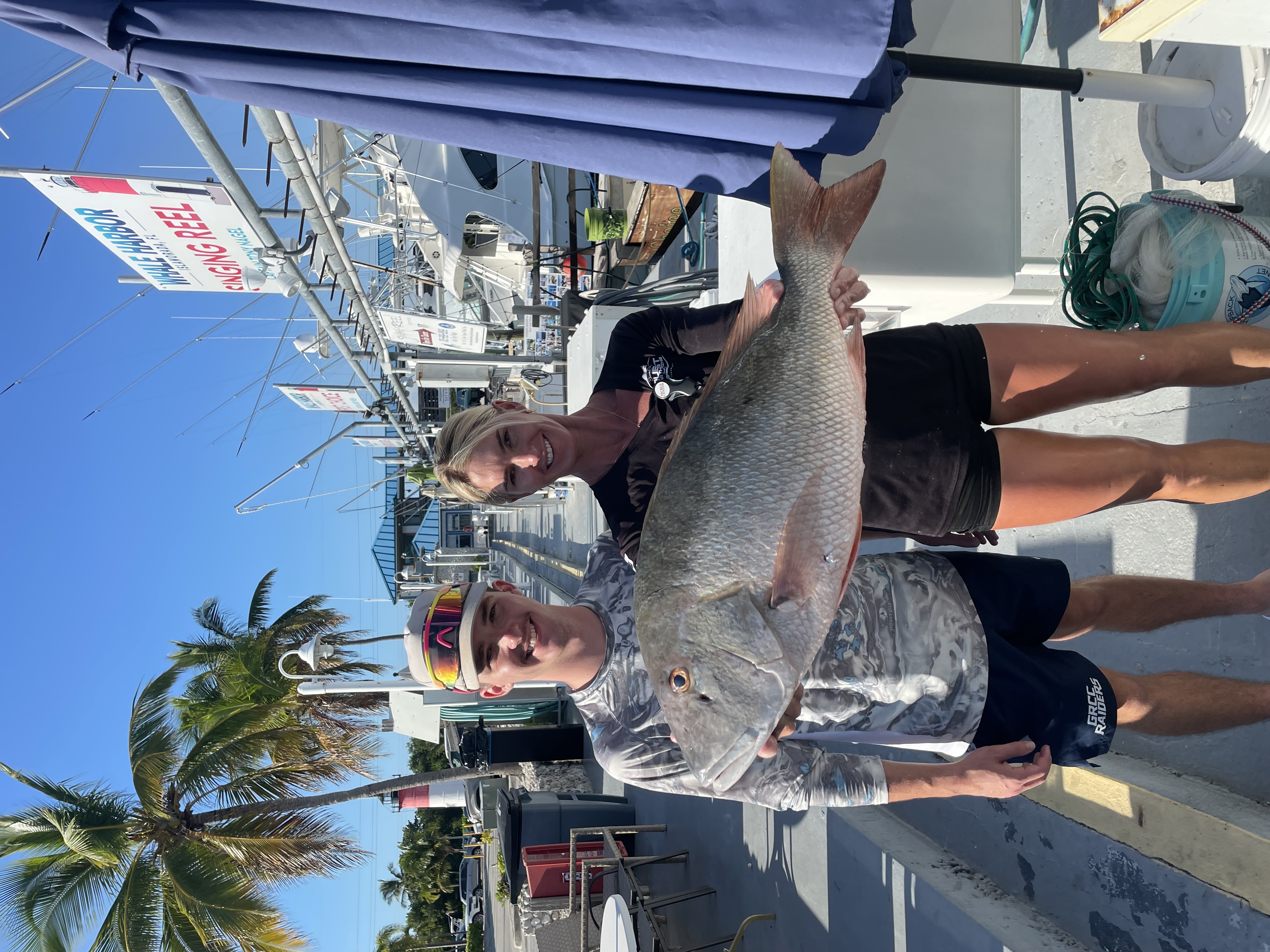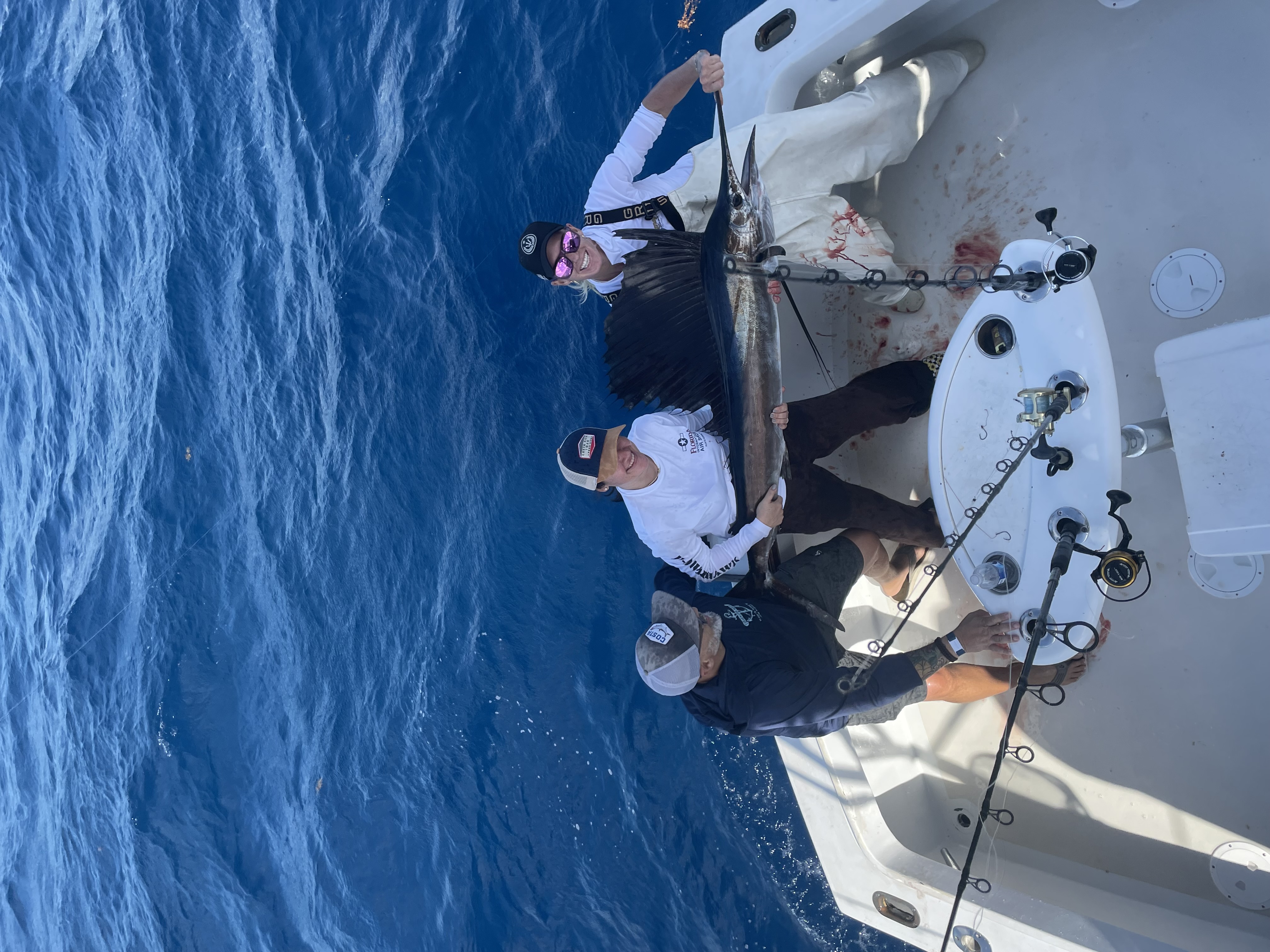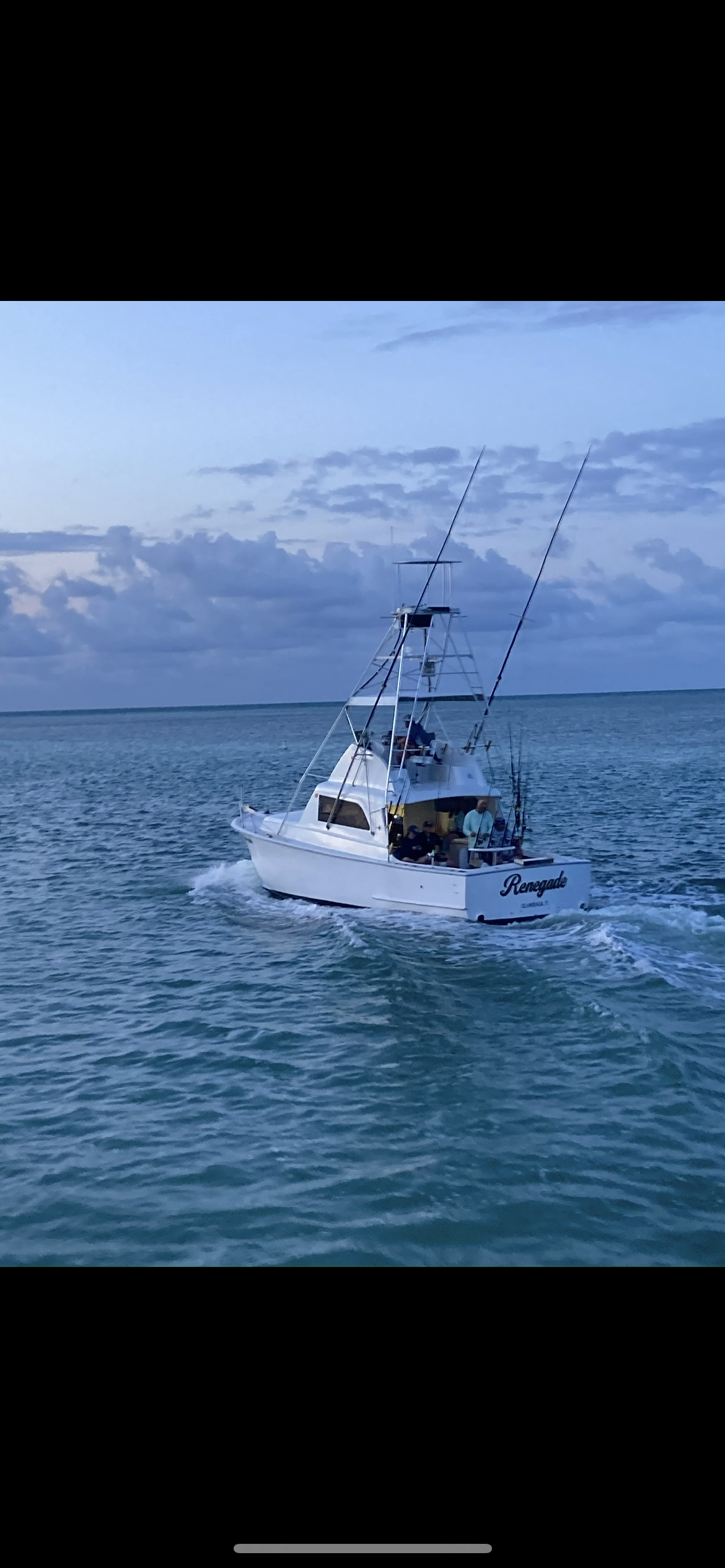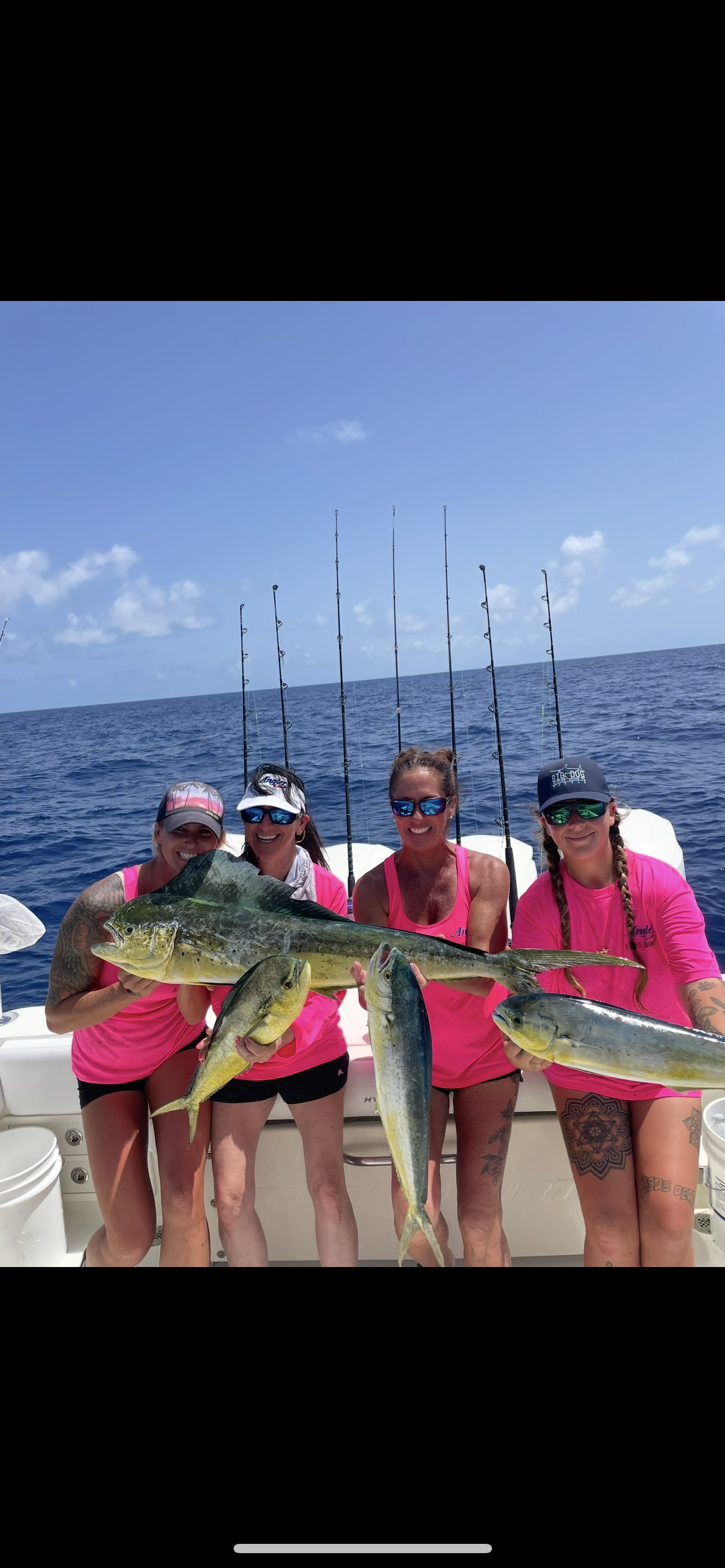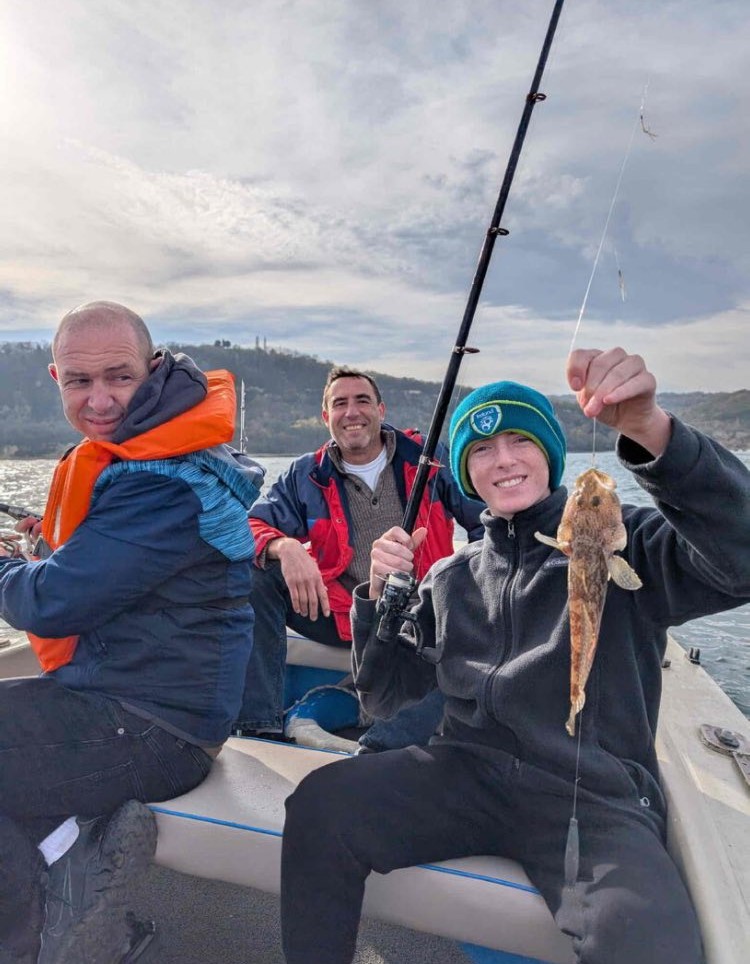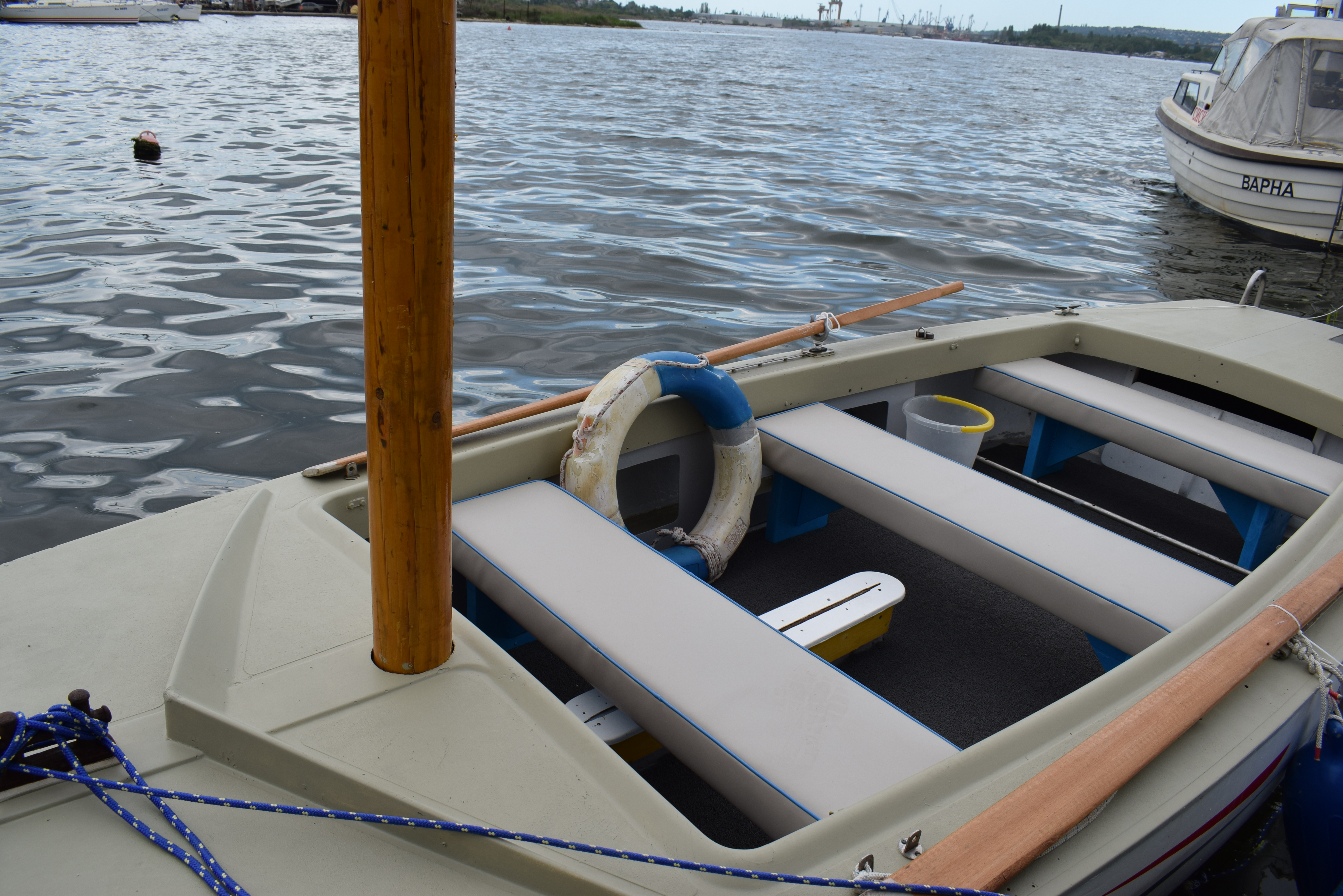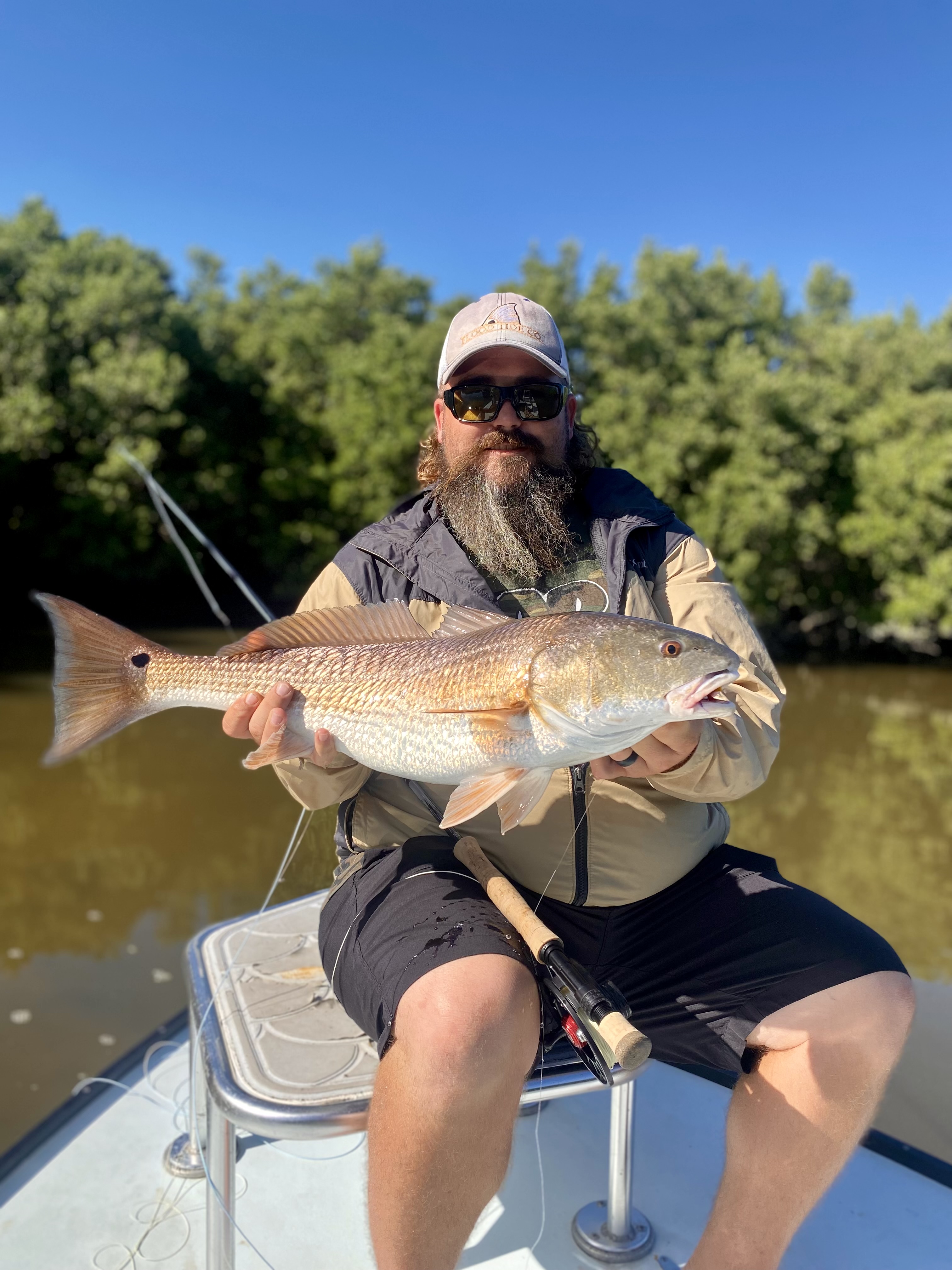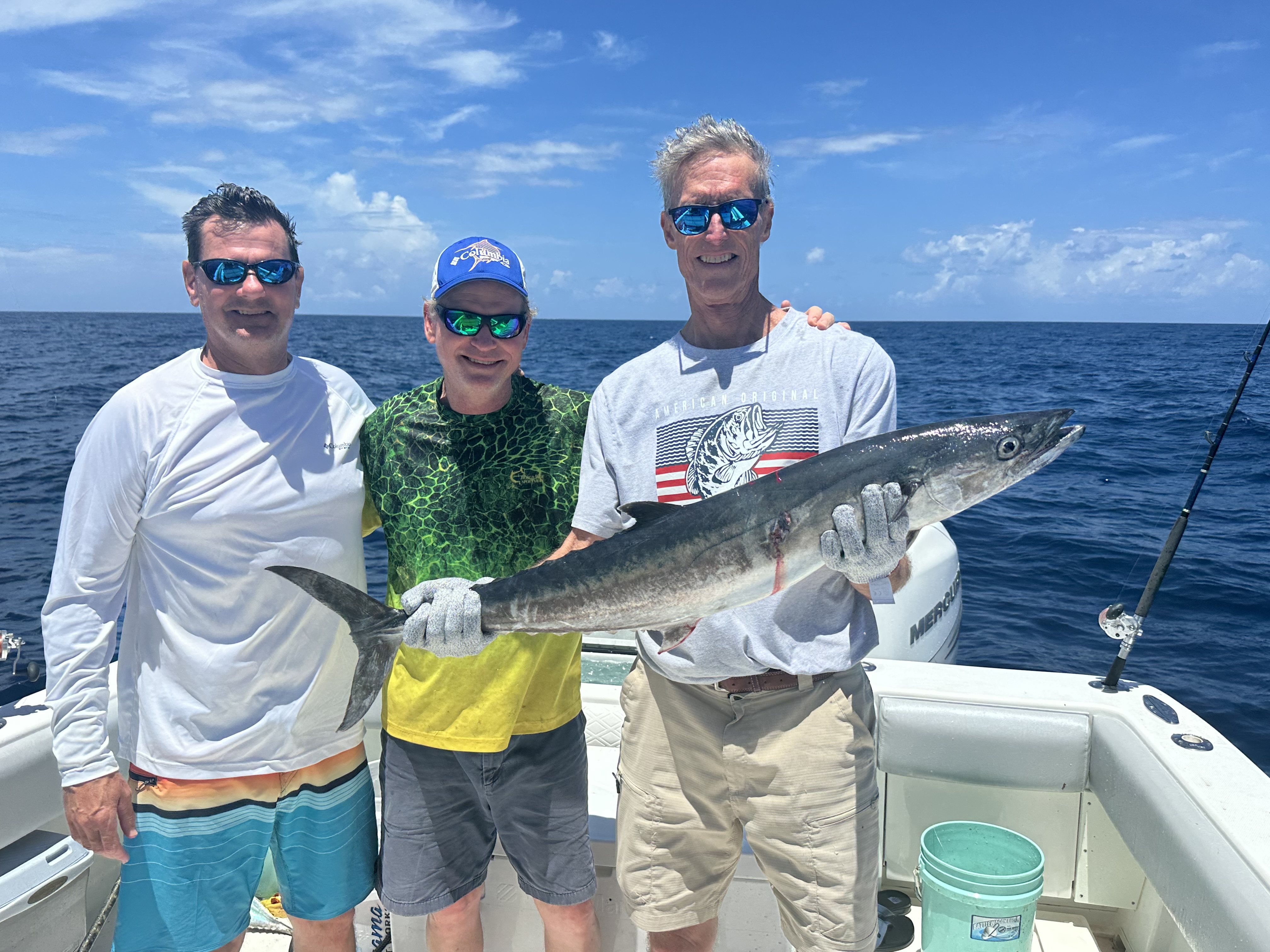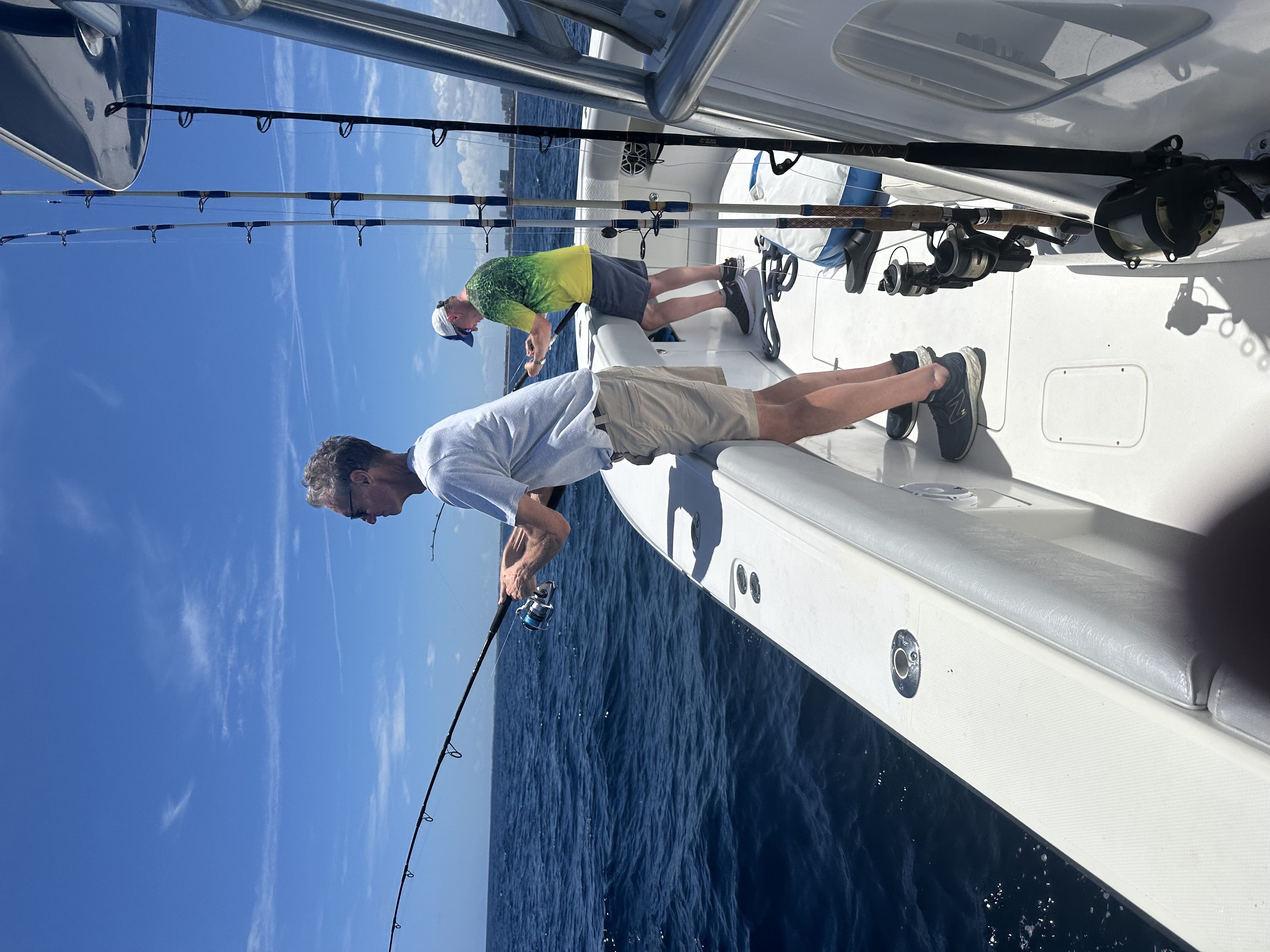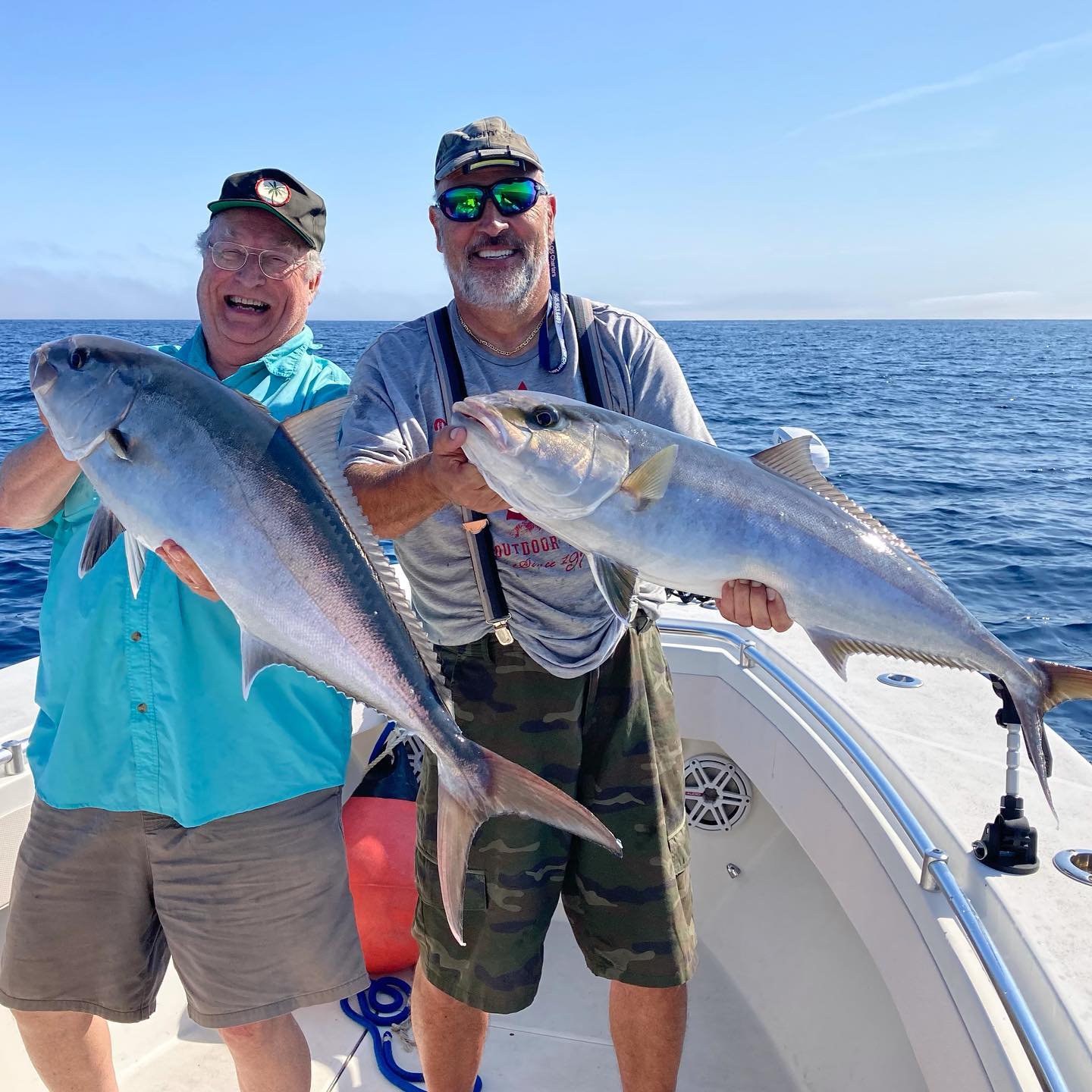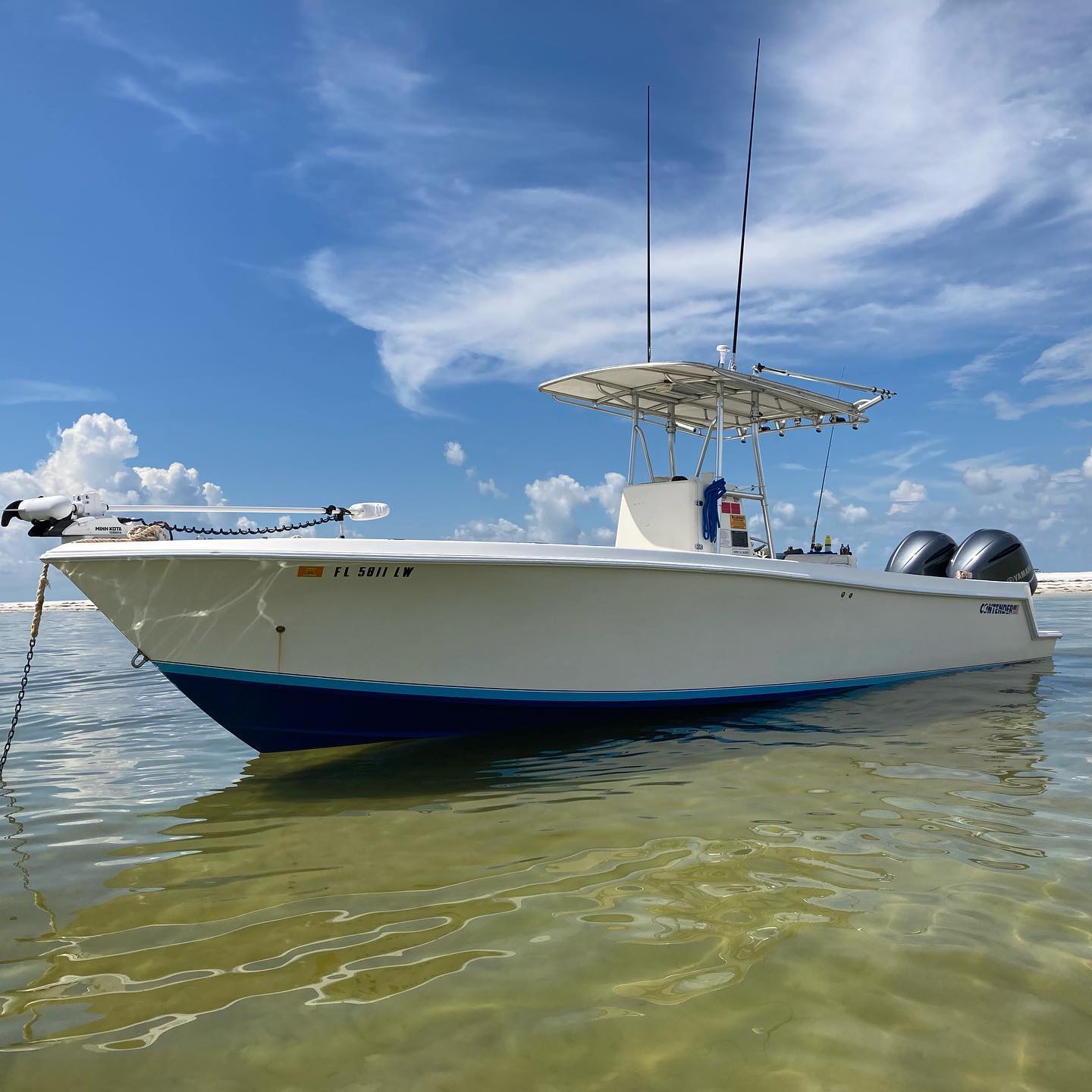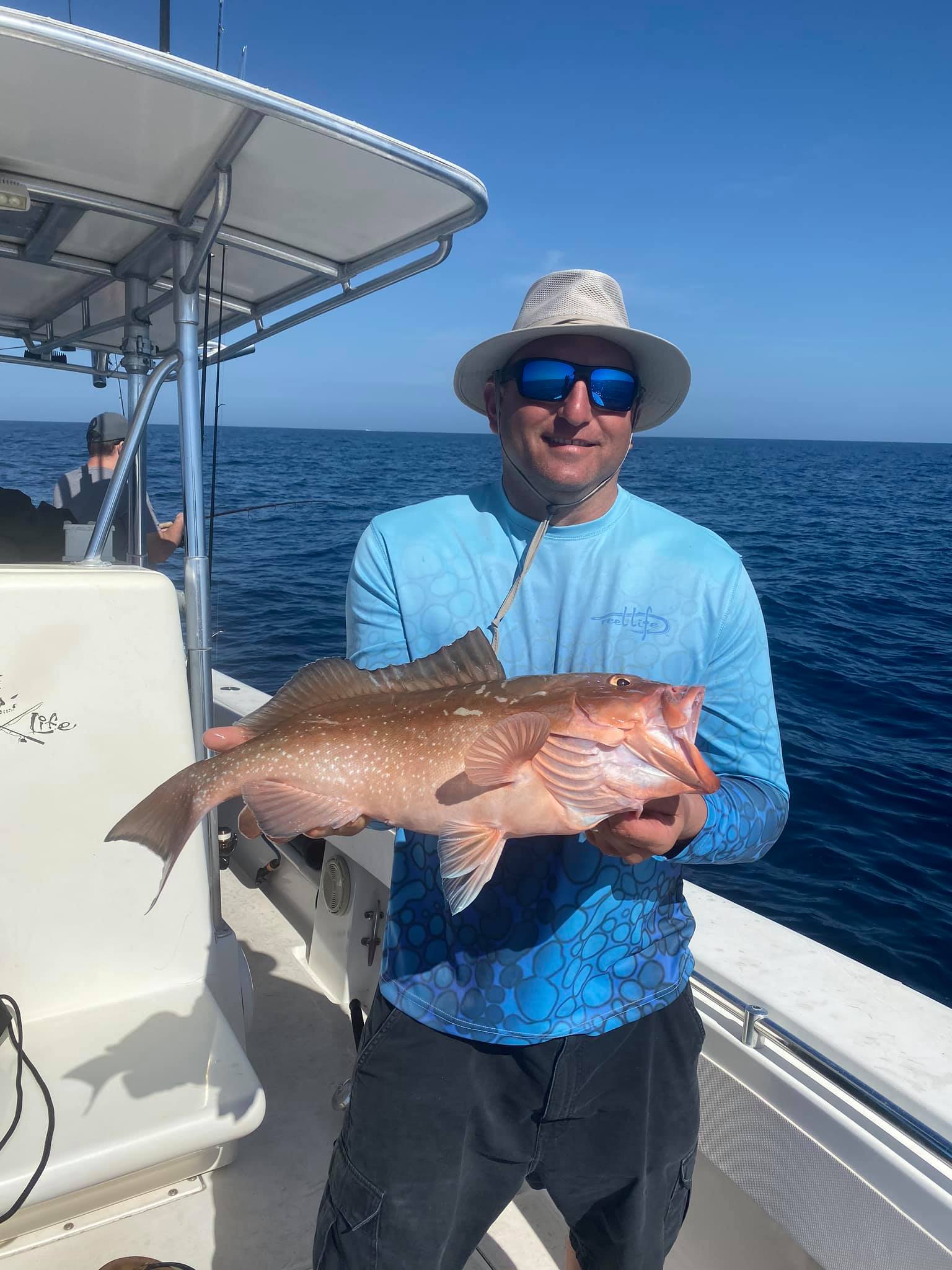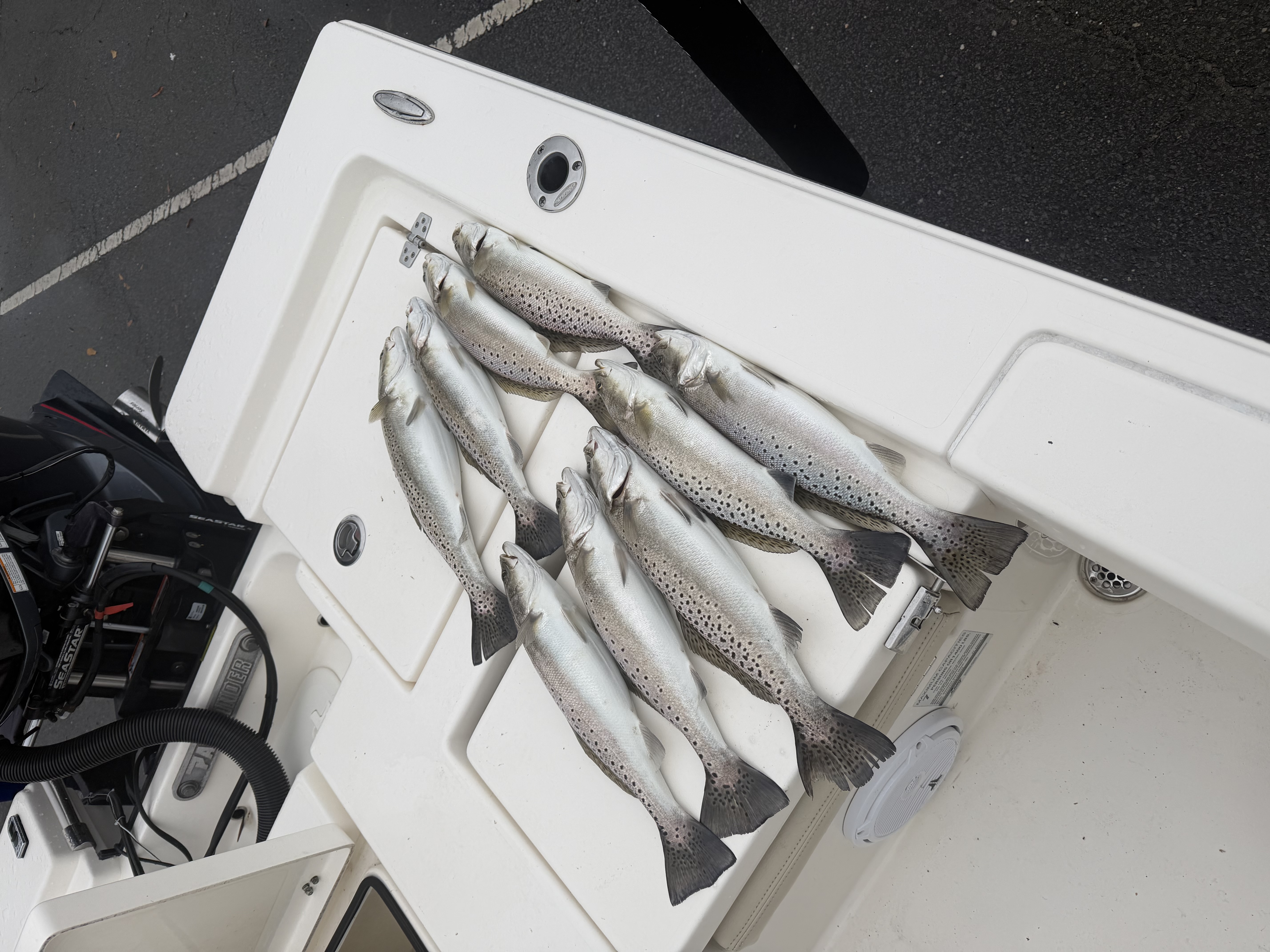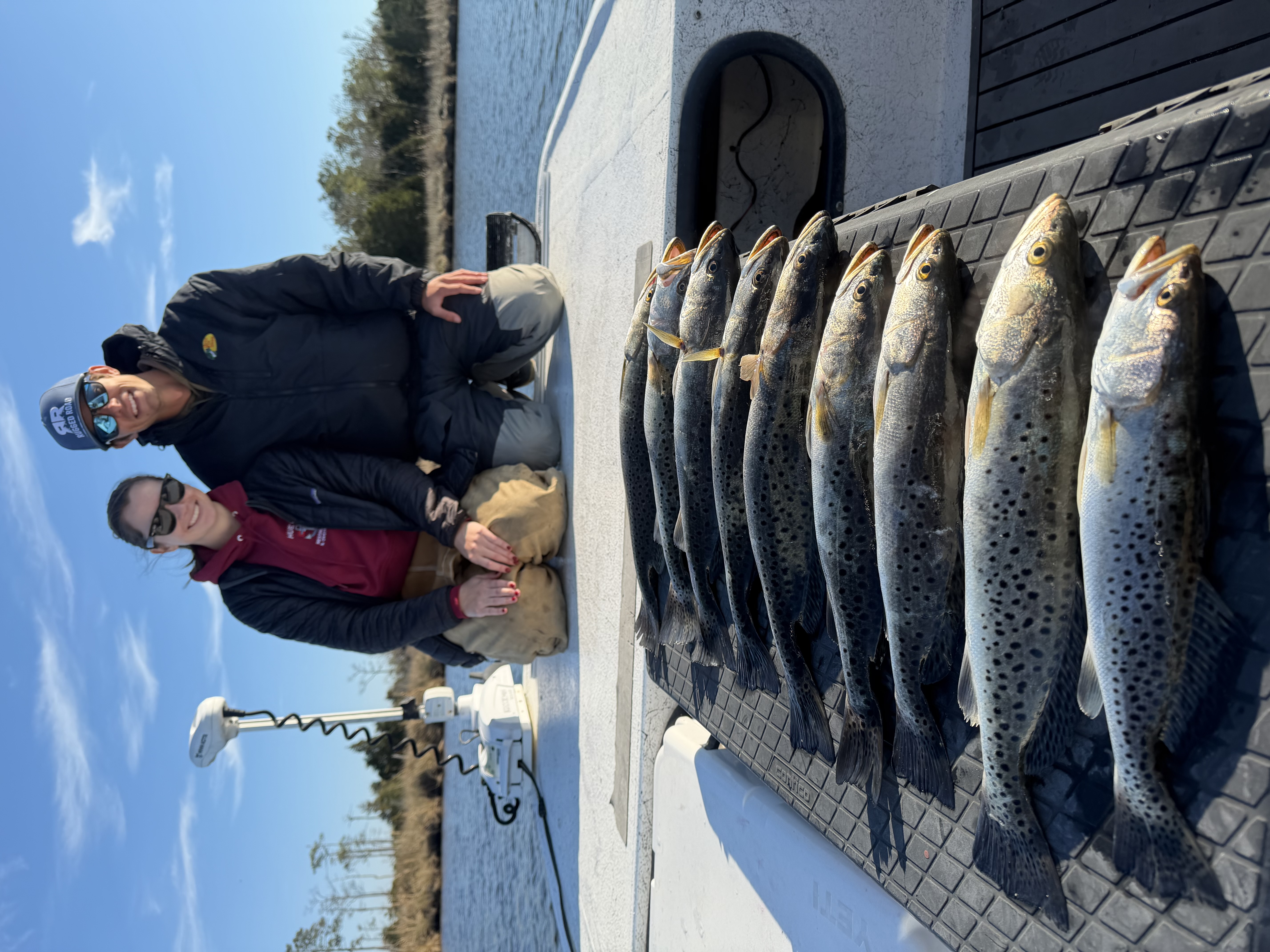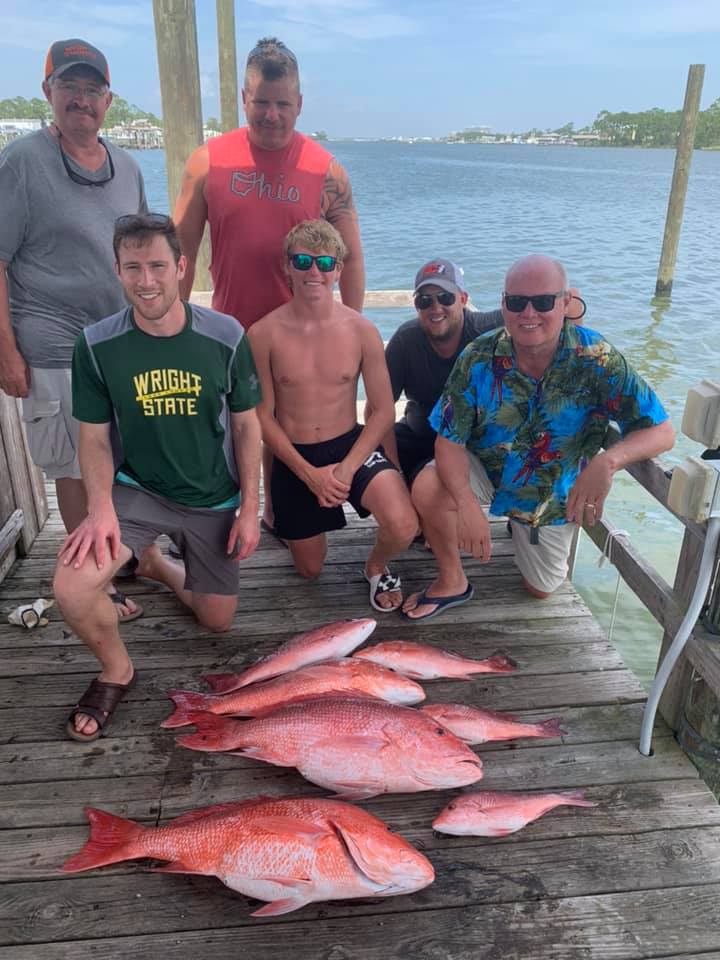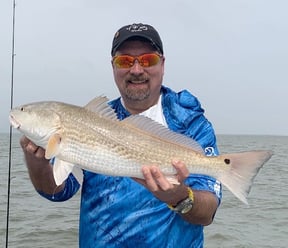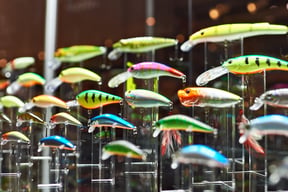Inshore Fishing Trip
Steelhead Fishing Trip
Deep Sea, Nearshore Fishing in Islamorada
4 Hour Half Day
Deep Sea, Nearshore Fishing in Islamorada
6 Hour 3/4 Day
Black Sea Trips
Inshore, Flats Fishing in Pineland
Fly Fishing Pineland
Inshore, Deep Sea, Nearshore in Palm Beach Shores
Catching Fish And Having Fun
Offshore Fishing Trip
Winter Speckled Trout
Deep Sea, Nearshore Fishing in Orange Beach
December Snapper Reopen Special!
We started Captain Experiences to make it easy to book fishing and hunting guides around the world. With over 2,000 Damn Good Guides, our platform makes finding and booking a trip seamless. Head here to check out our trips.
Fishing the jetties offers a great chance of catching fish year-round, and the fall is often the best season to get in on the most exciting action of the year with redfish, trout, and many more species of saltwater fish. Every fall, several species of game fish and bait fish migrate from the marshes and bays out to the Gulf of Mexico. Some of the popular species that migrate to the Gulf include flounder, many speckled trout, and the large, breeding-sized redfish that are typically over 28” in length. But it is not just these popular inshore targets that stack up along the jetties during the fall. It seems like all the popular inshore gamefish can be caught from the jetties during this time of year.
How to Fish the Jetties: No Wrong Way
Fishing the jetties offers opportunities for all anglers to catch fish using a variety of different methods. Many fishermen enjoy spending the weekends sitting on the rocks in hopes of catching a passing fish. In Texas, jetties probably offer the best chance for anglers to catch a saltwater fish without getting on a boat or wading into the water. Safety is important when walking on these huge, wet rocks that can be covered in slippery algae that grows on the damp surface. Safety is also a big concern for anglers in small watercraft because the waves and currents at the jetties can be considerable.
For anglers using a boat, there are many chances for catching a fish along the jetties. Different species of fish tend to feed along the jetties in different ways, and experienced pros can position the boat to take advantage of whichever species is biting. Some species, such as redfish and black drum, tend to stack up along the base of the jetties. The rocks extend below the surface. If you can find the line where the rocks hit the sand, then you can drop your line down to target reds and drum. Dead shrimp and a heavy weight are a popular rig for catching these fish.
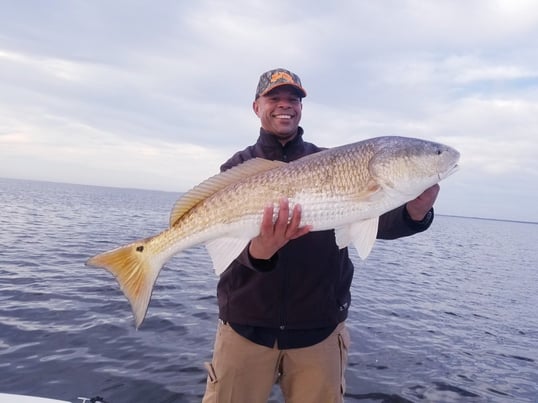
In times of high current, look for any types of eddies, humps, curves, or holes that might break up the fast-moving water and allow you to fish nearly straight down. If the currents are carrying your line a good distance from the boat, then your chances of catching the fish go down while the odds of hooking into the rocks goes up.
Speckled trout seem to gather closer to the surface right along the edges of the jetties. Using a popping cork or a topwater lure is often necessary to minimize the chances that you will get hung up in the shallow rocks. Many other species of fish can be caught throughout the water column. The key concern for fishermen is being able to keep their bait or lure near the rocks without getting snagged. Half the fun of fishing the jetties is that you never know what you might catch on any given cast.
Popular Jetties Along the Texas Coast
Texas has a long coastline, and that means there is plenty of room for a lot of jetties. Some of the more popular jetties along the Texas Coast include:
South Padre Island Jetties
Port Mansfield Jetties
Packery Channel Jetties
Port Aransas Jetties
Port O’Connor Jetties (the “Big” ones)
Matagorda Jetties
Quintana/Surfside Jetties
Galveston Jetties
Sabine Jetties
Some of these jetties are literally miles long, and other jetties are quite short by comparison. Certain jetties such as the Galveston, Port Aransas, and South Padre Island are popular locations for fishing from the bank. As an example, the Port Aransas jetty has a sidewalk and drive-up access at the beach so anyone can easily pull up to do a little fishing. Other jetties, such as Port O’Connor’s Big Jetties, are only accessible by boat.
Species of Fish at the Jetties
All types of fish spend time at the jetties during the fall. Some of the more popular species that you can catch include:
(1. Redfish:
Most of the large reds migrate to the Gulf of Mexico during the fall. Redfish of all sizes roam the jetties in search of a meal throughout the fall season.
(2. Speckled Trout:
Not all speckled trout migrate to the gulf during the fall, but some of these prized game fish do migrate. Specks can be caught at the jetty nearly year-round, and taking advantage of the higher numbers of speckled trout during the fall migration can pay off for anglers.
(3. Sheepshead:
One of the fish that seems to be caught more at the jetties than anywhere else is the sheepshead. Sheepshead put up a good fight and make good table fare even if the size of the fillet is small compared to the size of the fish.
(4. Black Drum:
Black drum can stack up along the jetties in good numbers at certain times of the year. Like redfish, black drum are best caught along the base of the jetties where the rocks hit the sand.
(5. Jack Crevalle:
Jacks are a hard-fighting fish that is just as likely to break your line as it is to be reeled in back to the boat. Everyone loves to catch a jackfish every once in a while, but your arms will need a break after reeling in this species of fish.
(6. Sand Trout:
Sand trout, or sandies, are another species like sheepshead that seem to love the jetty area during certain times of the year. Although smaller than speckled trout, sand trout can be present in large numbers and make for some fast-fishing action.
(7. Flounder:
Flounder migrate to the gulf each fall. These fish pass through the jetties to reach open water, but they prefer a sandy bottom to the hard rocks. Therefore, most anglers seeking flounder will fish the areas near the jetties with a softer bottom rather than fishing directly over the rocks.
(8. Tarpon:
Tarpon tend to show up in Texas in the late summer and stick around through the fall. These fish are frequently within a few miles of the beach, and each year anglers will hook a few of these silver monsters while fishing the jetties in the central and southern portions of the coast.
(9. Spanish Mackerel:
Some of the fish typically found further offshore can also be targeted from the jetties. Spanish mackerel are an example of a fish found way out in the gulf that will travel to the jetties to take advantage of the bait in the area.
(10. Shark:
Some surprisingly large sharks are caught from the jetties by both the bank fishermen and anglers in boats. Casting a large hook on a large rod away from the rocks might result in a shark weighing over 100 pounds. There are many more species that can be caught along the jetties including croaker, ladyfish, stingray, whiting, and more. The professional fishing guides available from Captain Experiences have years of experience helping anglers take advantage of the fishing opportunities along the many jetties in Texas and beyond. For help booking your next trip, please contact us.
Joey Butrus
Updated on August 2, 2023

July 31, 2024
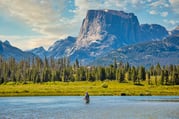
May 13, 2024

October 26, 2020

January 7, 2022

January 19, 2021
Related Articles
June 3, 2021
May 2, 2022
April 5, 2023
Featured Locations
- Fishing Charters Near Me
- Austin Fishing Guides
- Biloxi Fishing Charters
- Bradenton Fishing Charters
- Cabo San Lucas Fishing Charters
- Cancun Fishing Charters
- Cape Coral Fishing Charters
- Charleston Fishing Charters
- Clearwater Fishing Charters
- Corpus Christi Fishing Charters
- Crystal River Fishing Charters
- Dauphin Island Fishing Charters
- Daytona Beach Fishing Charters
- Destin Fishing Charters
- Fort Lauderdale Fishing Charters
- Fort Myers Fishing Charters
- Fort Walton Beach Fishing Charters
- Galveston Fishing Charters
- Gulf Shores Fishing Charters
- Hatteras Fishing Charters
- Hilton Head Fishing Charters
- Islamorada Fishing Charters
- Jacksonville Fishing Charters
- Jupiter Fishing Charters
- Key Largo Fishing Charters
- Key West Fishing Charters
- Kona Fishing Charters
- Lakeside Marblehead Fishing Charters
- Marathon Fishing Charters
- Marco Island Fishing Charters
- Miami Fishing Charters
- Montauk Fishing Charters
- Morehead City Fishing Charters
- Naples Fishing Charters
- New Orleans Fishing Charters
- New Smyrna Beach Fishing Charters
- Ocean City Fishing Charters
- Orange Beach Fishing Charters
- Panama City Beach Fishing Charters
- Pensacola Fishing Charters
- Pompano Beach Fishing Charters
- Port Aransas Fishing Charters
- Port Orange Fishing Charters
- Rockport Fishing Charters
- San Diego Fishing Charters
- San Juan Fishing Charters
- Sarasota Fishing Charters
- South Padre Island Fishing Charters
- St. Augustine Fishing Charters
- St. Petersburg Fishing Charters
- Tampa Fishing Charters
- Tarpon Springs Fishing Charters
- Venice Fishing Charters
- Virginia Beach Fishing Charters
- West Palm Beach Fishing Charters
- Wilmington Fishing Charters
- Wrightsville Beach Fishing Charters
